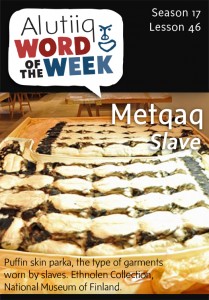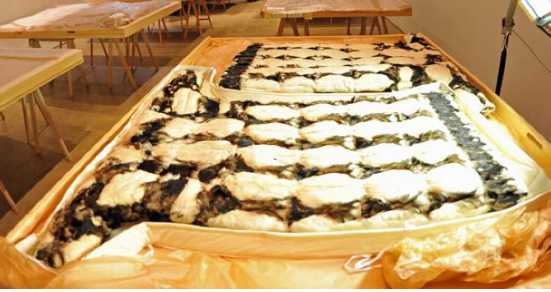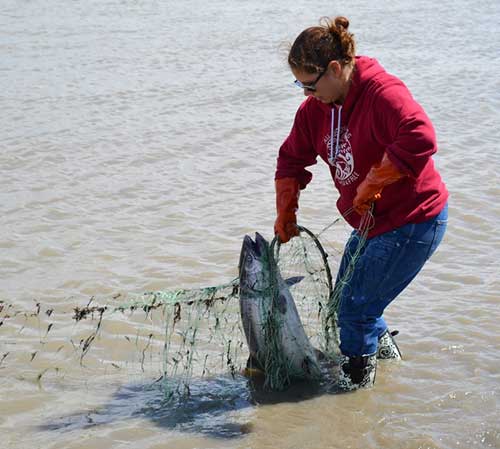Amlesqanek metqangq’rtuq. – He has a lot of slaves.
Like their Tlingit and Aleut neighbors, Alutiiqs lived in a ranked society. Individuals were born into one of three classes: elite, common, or slave. These social distinctions ordered much of daily life. From dividing subsistence foods to sharing a meal, giving gifts, or seating guests at a festival, activities were structured by social position. People of higher status always received the best treatment. A person’s clothes were even a measure of their rank. The wealthy wore embroidered garments of plush otter and fox furs. Slaves, at the other end of the social spectrum, wore simple robes stitched from seal and bird skins.
Slavery was an important component of the Alutiiq social system. By owning slaves, members of the elite class were able to maintain and enhance their prestige. War captives and orphans, usually women and children, became the property of the wealthy. They were obliged to work at subsistence and household tasks to generate wealth. As such, they were both a source and a symbol of wealth.
Slaves could be traded for goods, exchanged for hostages, given as gifts, and even sacrificed at their owner’s death. According to historic accounts, the treatment of slaves depended on their owner. Some owners were kind. Others were not. Whatever their treatment, the enslaved were allowed to marry and have children. Slaves could even marry non-slaves. These individuals remained in service, but their children were considered free.









